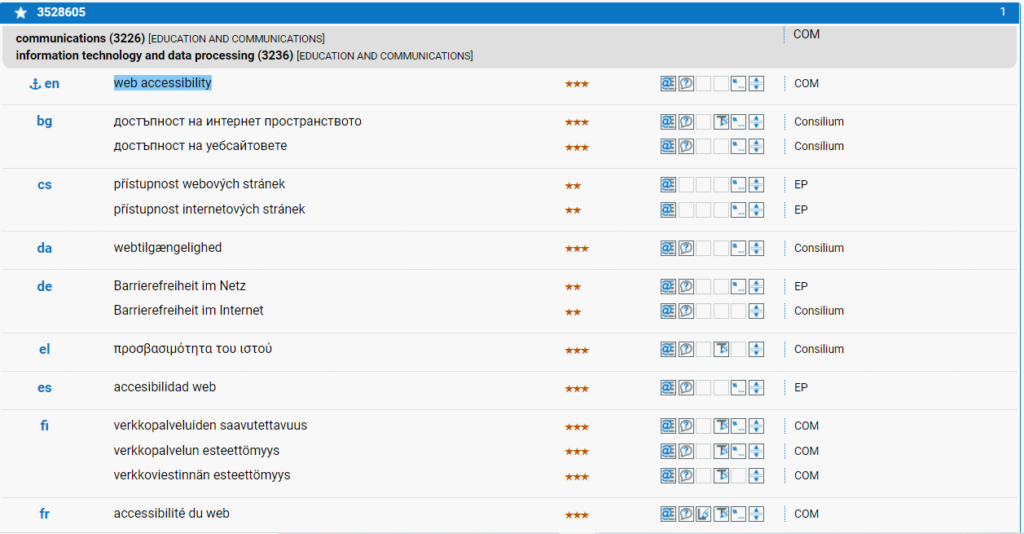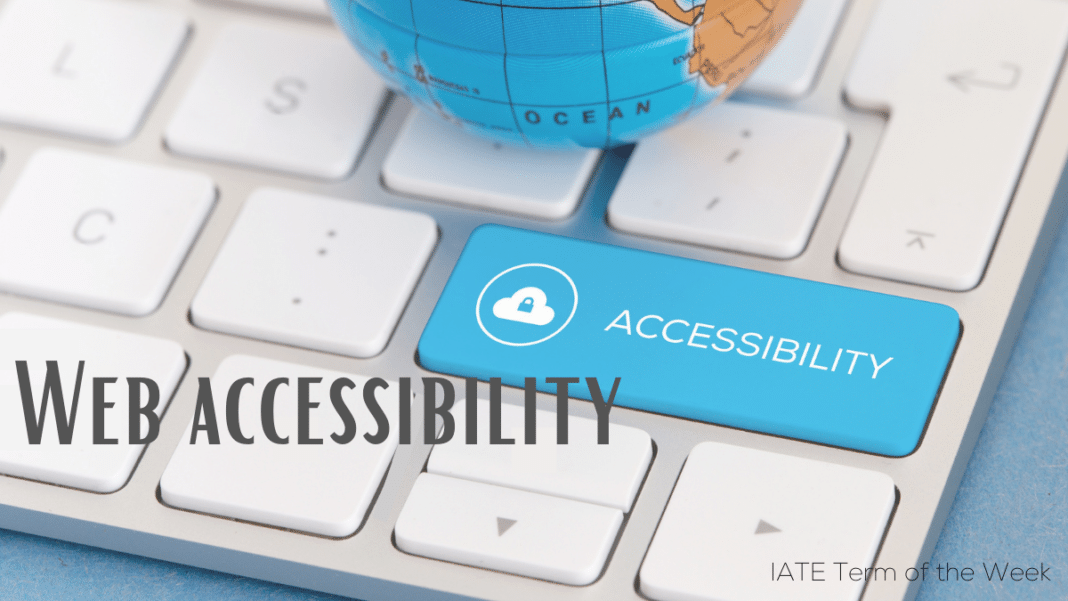“The power of the web is in its universality. Access by everyone regardless of disability is an essential aspect.”
(Tim Berners Lee)
The web has become for many people an essential part of their daily lives, offering opportunities that weren’t available before. Access to information, including the web, has been also declared as a human right by the UN Convention on the Rights of Persons with Disabilities. Nevertheless, most websites and web tools are not accessible by people with disabilities, preventing them from accessing the web equally.
First of all, web accessibility means that websites and devices are designed and coded to be accessible by people with physical, cognitive and intellectual disabilities.
There are more than 100 million people in Europe who live with a disability and over 1 billion people worldwide. These numbers cannot be ignored when we aim at making the web accessible and, most importantly, inclusive.
Who are we helping when we make our websites accessible?
Web accessibility includes all disabilities which can represent a ‘barrier’ to access the web, namely:
- Visual disabilities, such as low vision or colour blindness.
- Auditory disabilities, such as deafness.
- Cognitive and neurological disabilities, which can include visitors with learning disabilities or people affected by seizures.
- Physical and motor disabilities, such as repetitive stress injury or muscular dystrophy.
People without forms of disabilities can benefit from web accessibility, too. For example, anyone in a loud (or quiet) environment can use captions to watch a video, and a good contrast ratio can be beneficial in different lighting conditions, such as glare and sunlight.
In addition, it can also enhance various other experiences, for example for visitors on a slow internet connection or for people with age-related impairments. In the final analysis, everyone will have a better user experience with an improved layout and design.
How do we make our sites accessible?
There are established international standards that provide guidelines for accessibility.
W3C (World Wide Web Consortium) provides standards to help make the web accessible which are internationally recognized by governments and businesses. The most well known is the Web Content Accessibility Guidelines (WCAG).
These guidelines are built around four core principles, which state that content must be POUR:
- Perceivable: information and user interface components are presented to users in ways they can perceive with one of their senses.
- Operable: users can interact with the content through any means they choose, such as by typing or by voice.
- Understandable: content shall be presented in a clear and simple language.
- Robust: information can be accessed by different devices, such as assistive technologies.
The WCAG 2.0 classifies sites into three levels of accessibility:
- A (minimum accessibility level);
- AA (improved accessibility);
- AAA (highest level of accessibility).
To measure the accessibility level of any website, there are specific analysis tools to evaluate different elements of the content and user interface. Alternatively, it is recommendable to ask for advice from web accessibility experts, who will be able to detect and correct accessibility problems in the digital content.
However, some accessibility features can be implemented into the source code of websites and applications. For example, features to provide equivalent text alternatives for each image, which are read aloud by text-to-speech technologies, such as screen readers. Also headings, labels and especially link texts should be meaningful and provide contextual information when users click on it. Since media players and audio files are not accessible by deaf or by people with hard hearing, it is essential that the websites support speech-to-text software, such as dictation technology or that they provide a text transcript, which will make the content accessible.
Web accessibility in the EU
In February 2014, the European Parliament endorsed a draft law on the accessibility of websites. On 26 October 2016, the European Parliament approved the Web Accessibility Directive, which provides people with disabilities better access to websites and mobile apps managed by public sector bodies. The requirements are listed in the European standard EN 301 549 V 1.1.2, and also the European Telecommunication Standards Institute (ETSI) published that standard on their website. In 2019 the European Union established the European Accessibility Act, which sets common accessibility standards and encompasses technologies and services in the private sector.
The legislation reflects the Commission’s commitment to build a social and inclusive European ‘Union of equality’, where no one is left behind in the digital European economy and society.

IATE’s and TermCoord’s efforts in terms of web accessibility
The new version of IATE and its public version, including the content and the interface, is compliant with WCAG 2.1 level AA. In addition, users have the possibility to interact with the user interface through several shortcuts and screen readers software, preventing extensive use of the mouse.
The Terminology Coordination Unit of the European Parliament is also engaging in gradually making the website termcoord.eu accessible to everybody, taking part in accessibility training to raise awareness about digital inclusion.
References
Accessible Technology. 2021. Four Principles of Accessibility | Accessible Technology | University of Colorado Boulder. [ONLINE] Available at: https://www.colorado.edu/accessible-technology/four-principles-accessibility. [Accessed 15 June 2021].
Clear Helper. 2021. Web Accessibility for People with Cognitive Disabilities. [ONLINE] Available at: https://clearhelper.blog/. [Accessed 15 June 2021].
IATE European Union Terminology. 2021. Accessibility statement for the IATE web application. [ONLINE] Available at: https://iate.europa.eu/accessibility. [Accessed 15 June 2021].
Marty Wallwood. 2021. What is web accessibility?. The basics of web accessibility, and how it has evolved over time. | by Marty Wallwood | UX Collective. [ONLINE] Available at: https://uxdesign.cc/what-is-web-accessibility-they-asked-80a39a7ebe59. [Accessed 15 June 2021].
MEPs vote to make online public services accessible to everyone | News | European Parliament. 2021. MEPs vote to make online public services accessible to everyone | News | European Parliament. [ONLINE] Available at: https://www.europarl.europa.eu/news/en/press-room/20140220IPR36573/meps-vote-to-make-online-public-services-accessible-to-everyone. [Accessed 17 June 2021].
Shaping Europe’s digital future. 2021. Web Accessibility | Shaping Europe’s digital future. [ONLINE] Available at: https://digital-strategy.ec.europa.eu/en/policies/web-accessibility. [Accessed 15 June 2021].
The adoption of a directive on the accessibility of the sector bodies’ websites and mobile apps Shaping Europe’s digital future. 2021. The adoption of a directive on the accessibility of the sector bodies’ websites and mobile apps | Shaping Europe’s digital future. [ONLINE] Available at: https://digital-strategy.ec.europa.eu/en/news/adoption-directive-accessibility-sector-bodies-websites-and-mobile-apps. [Accessed 17 June 2021].
W3C Web Accessibility Initiative (WAI). 2021. Introduction to Web Accessibility | Web Accessibility Initiative (WAI) | W3C. [ONLINE] Available at: https://www.w3.org/WAI/fundamentals/accessibility-intro/. [Accessed 15 June 2021].
Wikipedia. 2021. Web accessibility – Wikipedia. [ONLINE] Available at: https://en.wikipedia.org/wiki/Web_accessibility. [Accessed 15 June 2021].
World Health Organization. 2021. Facts on disability. [ONLINE] Available at: https://www.euro.who.int/en/health-topics/Life-stages/disability-and-rehabilitation/data-and-statistics/facts-on-disability. [Accessed 17 June 2021].
YouTube. 2021. Introduction to Web Accessibility and W3C Standards – YouTube. [ONLINE] Available at: https://www.youtube.com/watch?v=20SHvU2PKsM. [Accessed 15 June 2021].
YouTube. 2021. What is Web Accessibility in 60 seconds! – YouTube. [ONLINE] Available at: https://www.youtube.com/watch?v=hufMi9LZX2I. [Accessed 15 June 2021].

Written by Maria Carmen Staiano, Schuman Trainee at the Terminology Coordination Unit. She holds a Bachelor’s in Linguistic and Cultural Mediation and a Master’s in Specialized Translation at the University of Naples “L’Orientale”. She has experience in translation technologies, project management and localisation.

